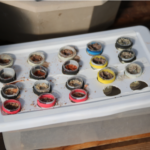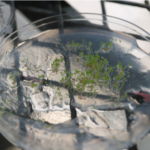[title Science Report – April 25th]
[category science-report]
Science Report 25 April 2019
Crew 211 – UCL to Mars
Submitted by Science Officer Maxime Bernard
1) Commander Carl Dahlqvist
Working on the software to allow the main module to receive data from the secondary modules.
2) XO Officer
Coding a trilateration algorithm to compute the position of a target from the respective distances from that target to the 3 antennas.
3) HSO Officer Benjamin Flasse
Every morning and every evening, the HSO still gather data about the mensurations, weight, brain awakeness, tension and pulse of the crew.
4) Crew Astronomer Eleonore Lieffrig
Working on the images she got from the remote telescope.
In the meantime she started to work on the Brownian motion operator.
5) Crew Engineer Julien Amalaberque
No major milestone reach for now.
6) Crew Biologist Chloé Peduzzi
She checked the spirulina through the microscope and confirmed it was the right species (Arthrospira Platensis). Moreover, she observed their spiral shape which indicate their healthy state.
She then proceeded to the aeration of all the spirulina culture.
7) Crew Journalist Nathan Pechon
We made a meeting during which he presented us law articles about birth and immigration rights on a martian colony and we had to vote these articles.
8) Crew Scientist Maxime Bernard
He assembled his detector and started the acquisition of data from muon interactions




You must be logged in to post a comment.